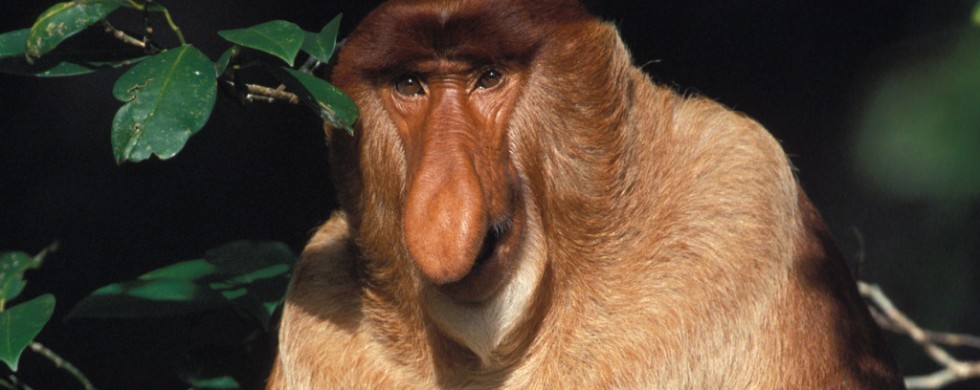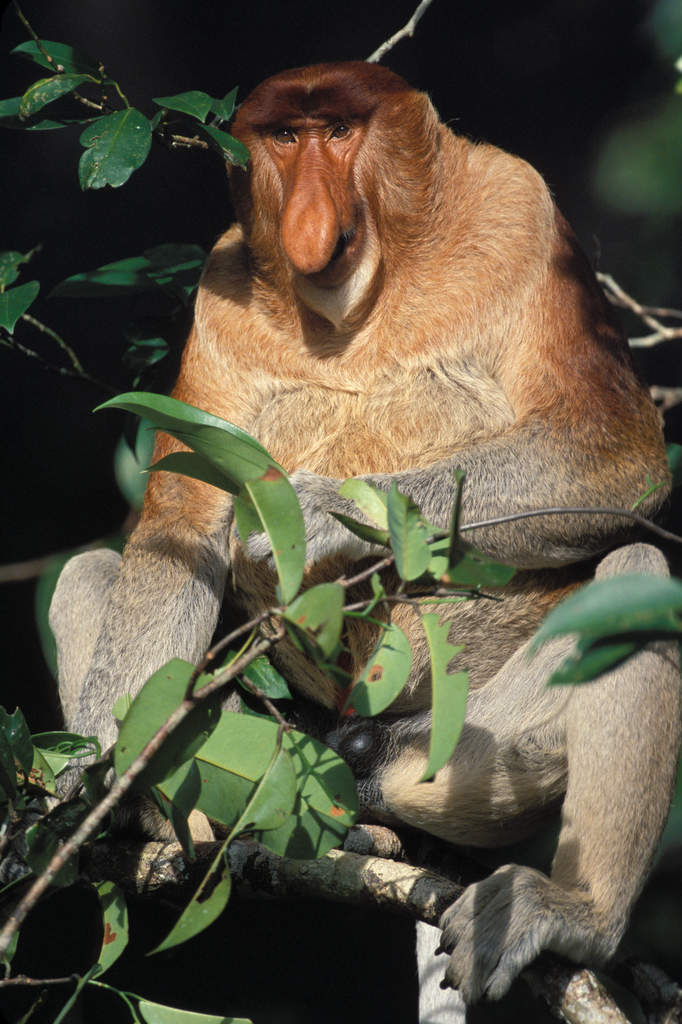
15
2011Winner by a Nose – July 2011
Shot of the Month – July 2011
For five days and nights, our wooden boat worked its way up the Sekonyer River through the oppressive heat and pallor of the Kalamatan jungle on the Island of Borneo. (If you can remember Martin Sheen’s trip up the Nung River in the Cambodian Jungle in “Apocolypse Now” you will have a good sense of what the conditions were like – though, luckily, without the gunfire.)
The primary goal of the trip was to see orangutans but along the way, we spotted this homely fellow, a Proboscis monkey, among the trees along the river’s edge.
Pro-what? New word for Michael. For you other non-scrabble players:
Proboscis: /proʊˈbɒsɪs/) an elongated appendage from the head of an animal, either a vertebrate or an invertebrate, e.g. the trunk of an elephant or the feeding tube of a butterfly.
Scientists aren’t sure but they assume that the larger the nose, the better the luck in attracting the lady monkeys. Go figure. The females also have largish noses but they are not as pronounced as in the males. Proboscis monkeys have the largest noses of any primates. The male vocalizes through the nose with a kee honk sound. Really, I couldn’t make this stuff up.
And a gentle reminder, it is not polite to stare.
Adding to the Homer Simpson look, the Proboscis monkey has a pot belly. Their stomachs are large to accommodate several compartments that use bacteria to digest the cellulose of the leaves of mangrove and pedada trees. When full, the stomach can represent 1/4th of the animal’s body weight! These leaves represent 95% of their diet.
Dining primarily on leaves allows the monkeys to remain safely high up in the trees and avoid predators lurking on the ground.
Proboscis monkeys are agile climbers but they are also quite at home in the water. They can often be spotted walking upright across stretches of water in the mangroves. Fishermen have even spotted the monkey swimming up to one mile offshore in the ocean. Proboscis monkeys actually have partially webbed feet – a testament to how much time they spend in or near the water.
In Indonesian (Borneo is part of Indonesia) this monkey is named orang belanda which means “Dutchman.” Seems the locals thought the Dutch, who colonized this part of the world, often had large noses and pot bellies like their local monkey. Sounds like payback if you ask me.
There you have it, the web-footed, pot-bellied, elephantine-esque primate otherwise known as the Proboscis monkey. Another beautiful, uh, well, striking sight from the natural world.

